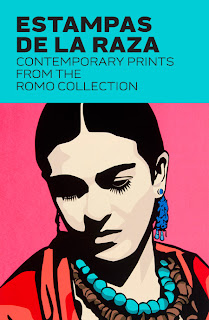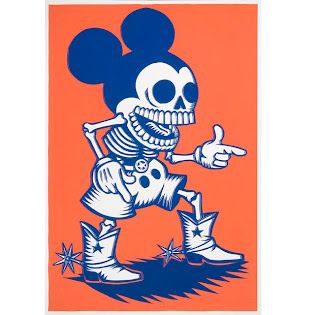It's that time of year (especially we winter-bound Midwestern artists) when an inked up army of printmakers starts getting that itch to look for a new place to go 'get down' with a plate or stone for a week, month, summer, or a year. Now the Netherlands has its own rich history in art and printmaking, and there are any number of sights and entertainments to be found there. In Amsterdam (Red Light district aside), one can find and fall in love with this notable printshop, The Amsterdam Graphic Studio. It was founded in 1958 by graphic designer Harry Kruiningen and the then director of the Wereldbibliotheek, Jan G. Winterink. It is the oldest graphic workshop in the Netherlands, originally for Amsterdam artists who could not afford their own studio facilities. It is a collective workshop designed for professional artists and designers, and now boasts a good following of local and international artists seeking solace with a plate or stone.
This workshop is distinguished for utilizing eco-friendly workhabits. Hazardous solvents are replaced with more environmentally safe materials, and for the production of photopolymer etching, there is a contact box and small darkroom available.
Etching Facilities include four etching presses of varying sizes; the largest of which is
motorized. There are two acid
baths and a mobile container for very large sizes. A metal cutter, three ovens and two elevated
tables are available. There is an
aquatint box with resin powder.The Atelier also conducts workshops in traditional and digital media, press rental, facility rental and a respite from the world.
The workshop offers a variety of facilities, technology and expertise for artists to show their work to can
produce and develop. The AGA encourages experimentation by exchange between different disciplines and between artists from different countries.
The
Artist in Residence program contributes to
research and development of new work in the field of graphics (both traditional and digital techniques). National and international artists are invited to participate on the basis of their proposals. The use of the presses, newspaper printing, cleaning and the ability to bite the sheets are included in the monthly price.(€ 550 per month)
To apply for consideration as an Artist in Residence, please send a recent CV and three images of recent work. Including your proposal and the type of project you wan to pursue while at AGA, (day / month / year subscription) of the preferred dates.
For more information mail to info @ Amsterdam graphic studio or call 020-6252186
It's a great place to work, meet new inky companions, and then on one's off-times go see some unusual sights in the city's district (you know which one), sample the city's fine cuisine and drink, experience historic Amsterdam and its neighboring cities.
The Amsterdam Graphic Studio is
located in an old school building on Laurier Street, in the historical center of Amsterdam, in the Jordan. It is advisable to use public transportation.
Amsterdam Graphic
Studio
·
Laurierstraat 109 1016 PL Amsterdam
·
Tel: +31 (0) 20 6252186
·
Email: info@amsterdamsgrafischatelier.nl





.jpg)
.jpg)
.jpg)
















.jpg)
.jpg)






.jpg)
.jpg)

.jpg)
.jpg)
.jpg)

.jpg)
.jpg)
.jpg)
.jpg)
.jpg)
.jpg)
.jpg)